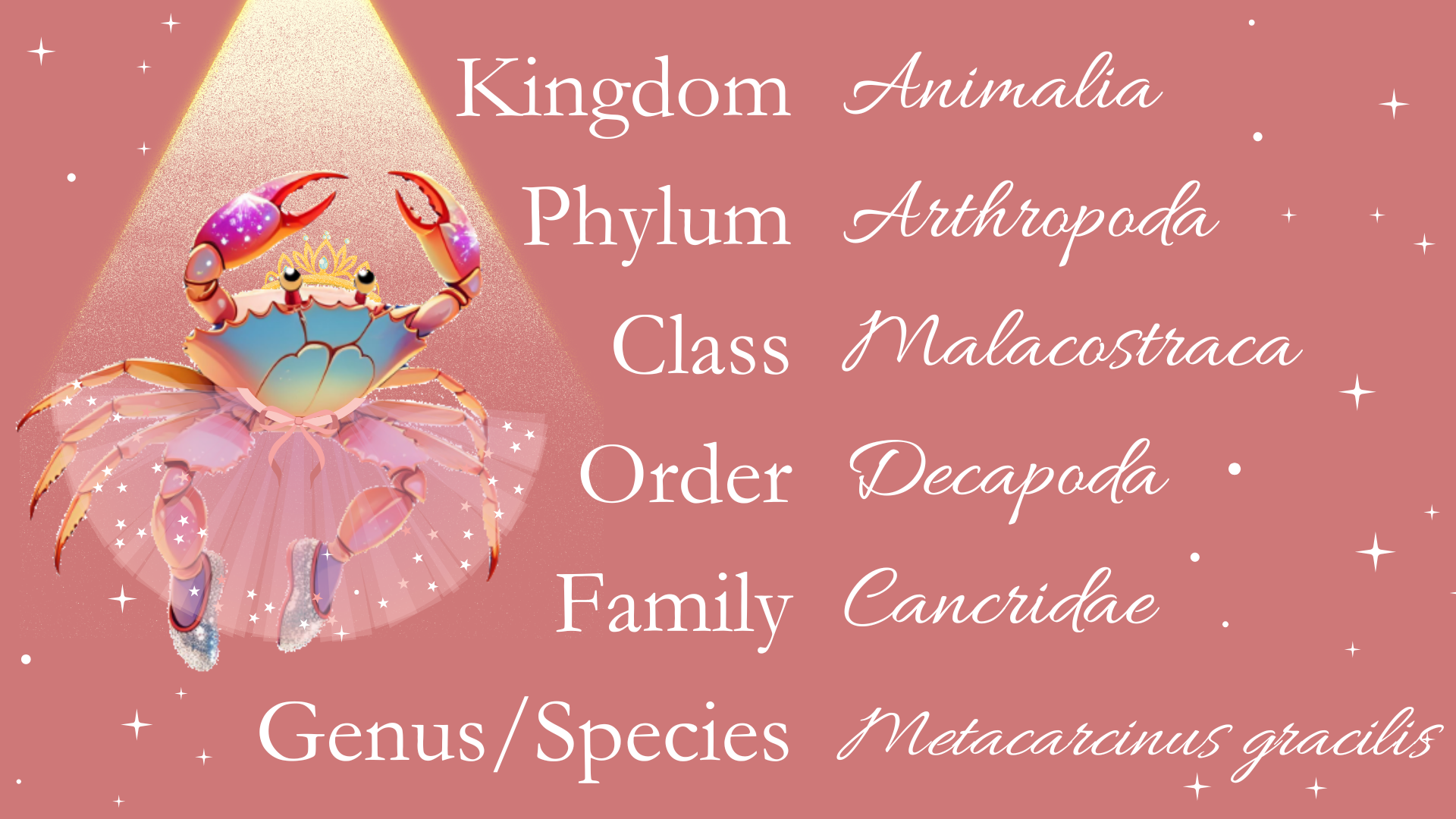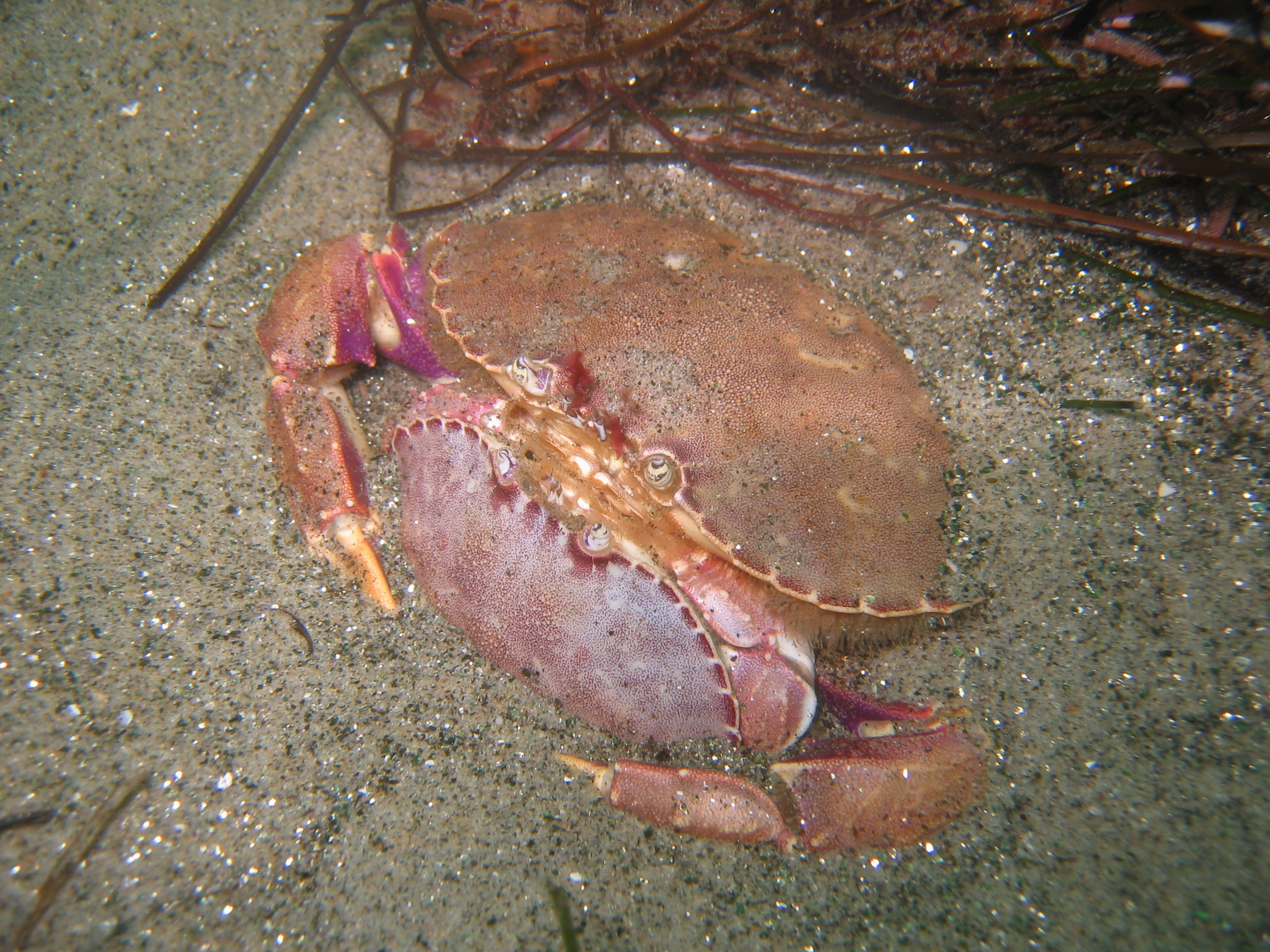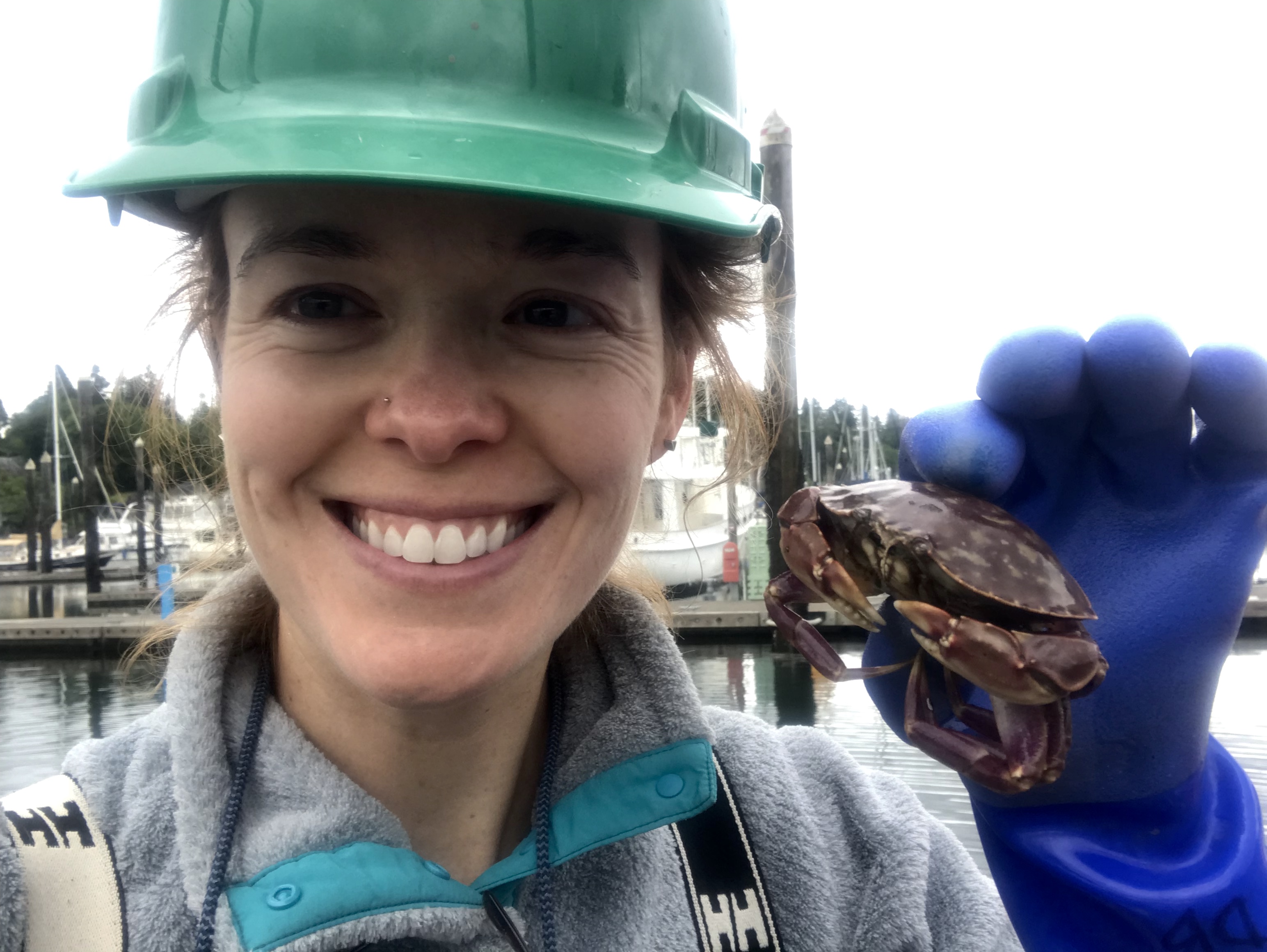A graceful rock crab waves its purple legs nonchalantly while we prepare to weigh, measure, and release it at one of our Budd Inlet sampling stations. 
One decade ago, two starry-eyed taxonomists released their first-ever blog post into the world, never imagining what a juggernaut the “Critter of the Month” would become. But our tens of devoted followers might tell you that now, when they are out and about around Puget Sound, they look at the mud a bit more knowingly, maybe even with a bit more fondness … and this author has certainly learned a few things in the process, too.
So with that, dear reader, shall we delve into the exhilarating world of yet another benthic creature? In celebration of this auspicious occasion, I feel compelled to share with you a critter I have observed many times over the last decade — in our benthic grab, on beaches, and at busy marinas. It is a critter with a countenance so similar to other species that the untrained observer might not recognize it for the incomparable gem it truly is — the graceful rock crab.
Family ties
If you think this crab looks a little “Dungenessey” upon first glance, your eyes do not deceive you. The graceful rock crab, Metacarcinus gracilis, is a lesser-known cousin of the Dungeness and red rock crabs, all of which share the distinguished family name of Cancridae.
At only 3.5 inches long, M. gracilis might not appear to be the brightest diamond of the shellfish season … in fact, there IS no season for graceful rock crabs. Unlike their larger, delicious relatives, they are considered an "unclassified marine invertebrate" under Washington’s shellfish regulations and cannot be legally harvested. So while the Dungeness or red rock graces your plate, the graceful crab skitters away to dance another day!
Ten years, ten legs, ten teeth
All three aforementioned species of cancer crabs are found in Puget Sound and can be distinguished by looking at their carapace (shell) and claws. All three species have 10 marginal teeth (along the side of the carapace, including the one right under the eye), but the graceful rock and red rock crabs are widest at the 9th tooth (followed by an inconspicuous 10th tooth) while the Dungeness is widest at the distinct 10th tooth. You can also easily rule out the red rock crab by its bright red carapace and black-tipped claws.
LEFT: graceful rock crab, M. gracilis; CENTER: Dungeness crab, M. magister; RIGHT: red rock crab, Cancer productus. Images are not on the same scale. Photos by Gustav Paulay, Florida Museum of Natural History, CC BY-NC 4.0.
Black sheep Green crab of the family
Now, this author is not one to spread sensational gossip, but whispers abound surrounding the appearance of yet another cancer crab in parts of Puget Sound — the highly invasive European green crab, Carcinus maenas. This scandalous introduction may mean resource competition and predation threats for the graceful rock crab and its more respectable family members. Keep your wits about you and report any green crab sightings to the Washington Department of Fish and Wildlife or Washington Sea Grant.
Stress test
Graceful rock crabs can often be seen in places like this Budd Inlet marina, where rapidly changing environmental conditions are a part of life.
Graceful rock crabs have more to contend with than just undesirable relatives. Although they live underwater, they breathe oxygen — often a limited resource in the shallow bays and intertidal areas of Puget Sound where you might find them promenading across (or buried under) mud or rocks. Perhaps they relish a challenge, because they seem to be able to survive in conditions that would provoke a hasty retreat in more sensitive species. Scientists at the University of Washington have begun to dig into this question, studying how graceful rock crabs' metabolic processes help them cope with dissolved oxygen and temperature fluctuations.
She is beauty, she is grace, she traps saltwater in her face
One thing these crabs can't handle with grace is fresh water — they cannot tolerate anything fresher than 60 percent seawater (a salinity of about 20 parts per thousand). However, they do have one trick for riding out short-term exposures to low salinities. They exhibit a “closure response,” tightly closing their mouthparts to temporarily trap salty water inside their branchial chamber. This response can protect their gills for several hours during tidal changes or freshwater runoff events.
Pillar of the community
Graceful crabs have an expansive social circle in the Puget Sound ecosystem, interacting with both prey and predators. They are scavengers, feasting on detritus (dead organic matter) as well as algae and small benthic invertebrates that live in the mud. And all eyes are on which foods they choose: one study found that the dietary preferences of graceful rock crabs can play a significant role in shaping the ecological balance of their habitats.
Generous to a fault, the crabs then pass those sediment-derived nutrients up the food web as they are consumed by higher trophic level species like fish, octopus, and birds.
Swooning season is upon us
How romantic! The graceful rock crab mating ritual involves hugging it out. Photo by Magnus Kjærgaard via Wikimedia, CC BY-SA 2.5
Even the graceful rock crab reproductive ritual is charming. In early spring, the larger males find partners and gently hold them in a protective embrace while waiting them to molt, or shed their shells (the only time they are able to mate). Afterwards, the females carry the eggs under their abdomens until they are ready to hatch. Newly released larvae float off into the water column, often hitching rides on jellyfish to help them disperse throughout the Sound.
Patience is a virtue
Alas, that brings us to the end of our captivating crustacean exploration. Who knows what the next decade will hold for Critter of the Month? Are there even enough critters to last for another ten years of blogging??
Have no fear, dearest gentle reader… our list of benthic invertebrates is long, and there are many secrets still waiting to be uncovered at the bottom of Puget Sound. Rest assured that this taxonomist will be here, microscope and keyboard in hand, to fill you in on every delightful detail.
Critter of the Month
Dany is a benthic taxonomist, a scientist who identifies and counts the sediment-dwelling organisms in our samples as part of our Marine Sediment Monitoring Program. We track the numbers and types of species we see to detect changes over time and understand the health of Puget Sound.
Dany shares her discoveries by bringing us a benthic Critter of the Month. These posts will give you a peek into the life of Puget Sound’s least-known inhabitants. We’ll share details on identification, habitat, life history, and the role each critter plays in the sediment community. Can't get enough benthos? Check out our Puget Sound Benthos Toolbox story map for photos, taxonomic tools, and more!





